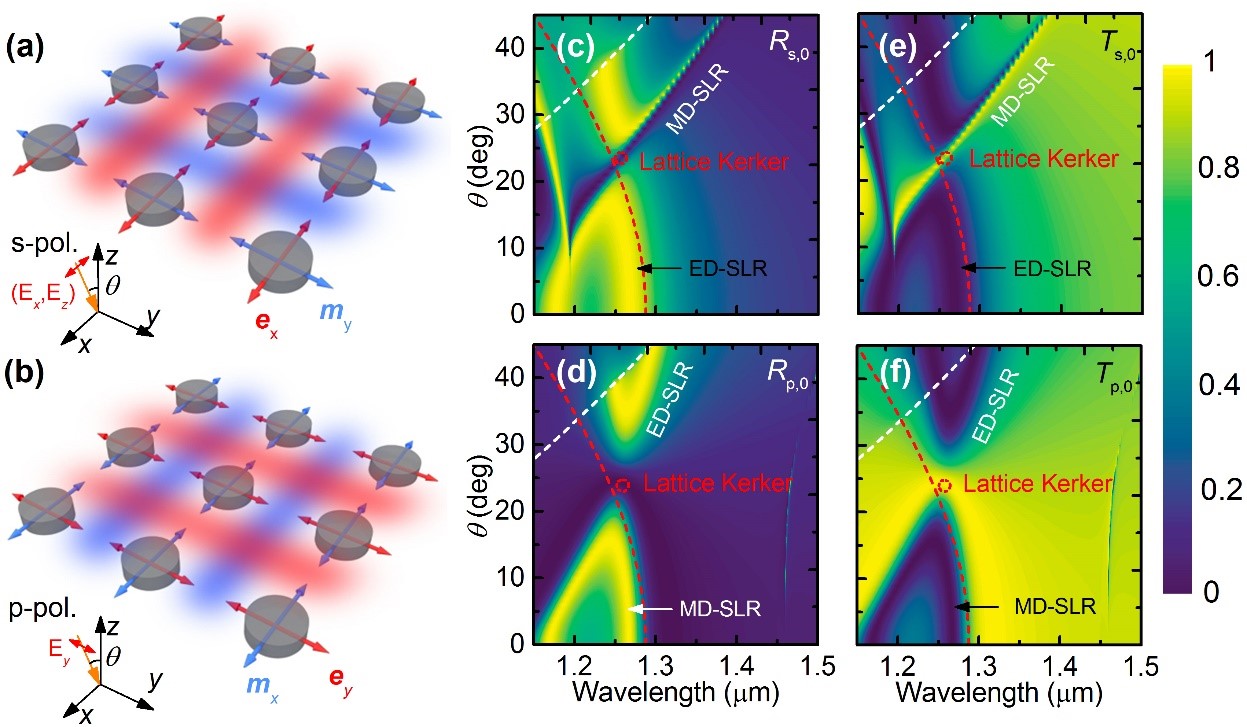Dual Lattice Kerker Effects: Controlling Light Scattering with Incident Polarization and Angle
Date:07-09-2022 | 【Print】 【close】
By using all-dielectric nanostructures, light can be scattered to a well-defined direction, which is the so-called generalized Kerker effects. These effects, however, are usually polarization-independent or realized for a particular polarization only.
A research group led by Dr. LI Guangyuan from the Shenzhen Institute of Advanced Technology (SIAT), Chinese Academy of Sciences (CAS), proposed and experimentally demonstrated polarization-controlled dual lattice Kerker effects in periodic silicon nanorods.
These results enable active tuning of the Kerker effect by varying the incident polarization or angle, and can be used in various applications including the manipulation of the direction, polarization, and phase of the scattered light, which are essential in nanophotonic chips.
This study was published in Nano Research.
In the dual lattice Kerker effects, the incident angles realizing the lattice Kerker effect (zero reflection and unitary transmission), which are referred to as the lattice Kerker angles, can be the same or different for the s- and p-polarizations, depending on the choice of the silicon nanodisks’ diameter and height. These lattice Kerker angles can be further tuned within large ranges by varying the lattice periods in both directions.
Other generalized Kerker effects reported in the literature mainly work under normal incidence, and are realized by varying the geometry parameters. This requires stringent choice of parameters and very careful fabrication. "By introducing the lattice effect, the so-called lattice Kerker effect can be realized through varying the incident angle. This merit enables active tuning of the Kerker effect in an as-fabricated sample, and thus significantly facilitates the design and fabrication," said Dr. LI.
An unexpected phenomenon is that, high-order multipoles such as electric and magnetic quadrupoles are also involved and become important when the periodic silicon nanodisks are obliquely illuminated by p-polarized light. This results in different dispersion relationships between the electric dipole surface lattice resonance (ED-SLR) under p-polarization and the magnetic dipole surface lattice resonance (MD-SLR) under s-polarization, leading to different lattice Kerker angles for the s- and p-polarizations.

When periodic silicon nanodisks are obliquely illuminated by s- or p-polarized light, ED-SLR and MD-SLR are excited. These SLRs spectrally overlap at specific angles for both the s- and p-polarizations, resulting in the dual lattice Kerker effects. (Image by SIAT)
Media Contact:
ZHANG Xiaomin
Email:xm.zhang@siat.ac.cn